
MicroProse is an American video game publisher and developer founded by Bill Stealey, Sid Meier, and Andy Hollis in 1982. It developed and published numerous games, including starting the Civilization and X-COM series. Most of their internally developed titles were vehicle simulation and strategy games.

Silent Service is a submarine simulator video game designed by Sid Meier and published by MicroProse for various 8-bit home computers in 1985 and for 16-bit systems like the Amiga in 1987. A Nintendo Entertainment System version developed by Rare was published in 1989 by Konami in Europe and by Konami's Ultra Games subsidiary in North America. Silent Service II was released in 1990. Tommo purchased the rights to this game and published it online through its Retroism brand in 2015.

Stunt Car Racer is a racing video game developed by Geoff Crammond. It was published in 1989 by MicroProse, under their MicroStyle and MicroPlay labels in the United Kingdom and in the United States, respectively. The game pits two racers on an elevated track on which they race in a head-to-head competition, with ramps they must correctly drive off as the main obstacle.

F-19 Stealth Fighter is a combat flight simulator developed and released in 1988 and 1990 by MicroProse, featuring a fictional United States military aircraft. It is the 16-bit remake of the 8-bit game Project Stealth Fighter, which was released for the Commodore 64 in 1987. It was also ported to the NEC PC-9801 in Japan only, and the DOS version was re-released on Steam distribution platform in 2015.

Loopz is a puzzle video game designed and programmed by Ian Upton for the Atari ST in 1989. He previously worked as head game designer for Audiogenic, who acquired exclusive rights to the game, then in 1990 arranged for Mindscape to publish it for computers in North America and consoles worldwide.

Carrier Command is a 1988 video game published by Rainbird for the Amiga, Atari ST, IBM PC compatibles, ZX Spectrum, Macintosh, Commodore 64, and Amstrad CPC. Carrier Command is a cross between a vehicle simulation game and a real-time strategy game where players control a robotic aircraft carrier.
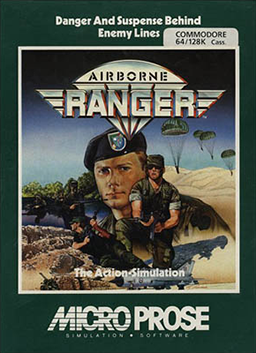
Airborne Ranger is an action game developed and published by MicroProse for the Commodore 64 and ZX Spectrum in 1987 and the Amstrad CPC and IBM PC compatibles in 1988. Ports to the Amiga and Atari ST by Imagitec Design were released in 1989. A sole U.S. Army Ranger is sent to infiltrate the enemy territory to complete various objectives. The game was followed by Special Forces in 1991.

PGA Tour Golf is a golf video game and the first in the PGA Tour game series. It was developed by Sterling Silver Software and released in 1990, for MS-DOS. It was initially published by Electronic Arts, which subsequently released versions of the game for Sega Genesis and Amiga in 1991, followed by a version for the SNES in 1992. By 1994, Tengen had published versions for Sega's Master System and Game Gear consoles. PGA Tour Golf received generally positive reviews for its realism, sound, and camera. Several critics considered the computer versions to be the best golf game available at the time of its release. It was followed by PGA Tour Golf II.
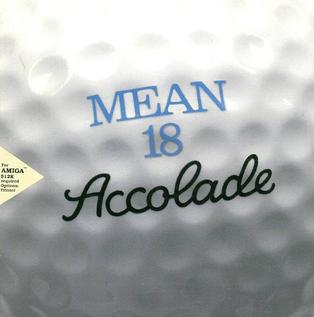
Mean 18 is a golf video game designed by Rex Bradford with graphics by George Karalias, both of Microsmiths, and released by Accolade for MS-DOS compatible operating systems in 1986. It was ported to the Amiga, Apple IIGS, Atari ST, and Macintosh. It includes an editor allowing players to create their own courses. In 1989, Atari Corporation published a port for the Atari 7800 console. An Atari 8-bit family version was in development in 1989 but was ultimately cancelled.

Flames of Freedom is a first-person shooter role-playing video game with simulation elements developed by Maelstrom Games and published by MicroProse for MS-DOS, Amiga, and Atari ST in 1991. It is a sequel to the 1989 game Midwinter and its working title was Wildfire. The Amiga version was re-released by Kixx XL in 1993.
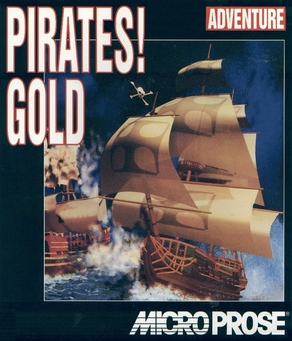
Pirates! Gold is a 1993 computer game, a remake to Sid Meier's 1987 release, Sid Meier's Pirates!

Dogfight: 80 Years of Aerial Warfare is a combat flight simulator video game developed by Vektor Grafix and published by MicroProse in 1993 for the PC DOS, Atari ST and Amiga. In North America, the game was released with the title Air Duel: 80 Years of Dogfighting.
Barry Leitch is a Scottish video game music composer, responsible for the music in many games spanning multiple consoles and personal computers. Most notable is his work from the Lotus Turbo Challenge, TFX, Gauntlet Legends, Gauntlet Dark Legacy, Top Gear, and Rush video game series.
Dominic Robinson is a computer game programmer. He came to prominence as an in-house programmer for Hewson Consultants when he converted Uridium to the Spectrum in 1986. This was followed by another classic Spectrum shoot-em up, Zynaps, and a puzzle/shooter, Anarchy, both of which were released in 1987. After leaving Hewson, he joined Graftgold to work on the Spectrum conversion of Flying Shark, as well as the Amiga and Atari ST versions of Simulcra and Rainbow Islands.
Scetlander was a software publisher which released titles for various 8- and 16-bit home computer systems in the 1980s and 1990s.
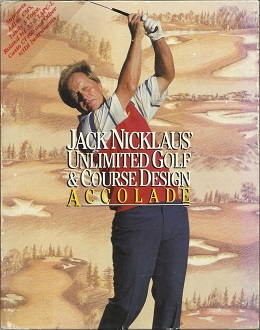
Jack Nicklaus' Unlimited Golf & Course Design is a 1990 golf video game developed by Sculptured Software and published by Accolade for the Amiga and MS-DOS. A Super NES version with the same golf courses, titled Jack Nicklaus Golf, was released in May 1992. It is the second in a series of golf games named after golfer Jack Nicklaus, following Jack Nicklaus' Greatest 18 Holes of Major Championship Golf (1988).
Jack Nicklaus is a series of golf video games named after golfer Jack Nicklaus. The first game, Jack Nicklaus' Greatest 18 Holes of Major Championship Golf, was developed by Sculptured Software and published by Accolade. It was released for various platforms beginning in 1988. Accolade would publish subsequent games in the series for the next decade, before selling the rights to Activision in 1998. Activision published a sixth game in the series, Jack Nicklaus 6: Golden Bear Challenge, in 1999, but chose not to publish a sequel due to poor sales. The next game in the series, Jack Nicklaus Perfect Golf, was released by a new company in 2016.

Trump Castle is a series of gambling video games published by Capstone Software between 1989 and 1993. The games are named after Trump's Castle hotel-casino in Atlantic City, New Jersey, and were released for Amiga, Atari ST, Commodore 64, Commodore 128, and MS-DOS.

Links: The Challenge of Golf is a golf video game developed by Access Software. It was published for MS-DOS in 1990, followed by the Amiga in 1992. A Sega CD version, developed by Papyrus Design Group, was released in 1994. It is the first game in the Links series, and was followed by Links 386 Pro (1992). A Microsoft Windows version, titled Microsoft Golf, was released in 1992 as the first game in the Microsoft Golf series.
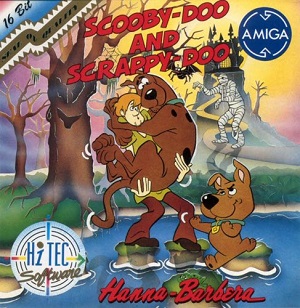
Scooby-Doo and Scrappy-Doo is a 1991 platform game developed by British studio PAL Developments and published by Hi-Tec. It is part of the Scooby-Doo franchise, and was released in Europe for Amiga, Amstrad CPC, Atari ST, Commodore 64, and ZX Spectrum. The game received praise for its graphics.
















